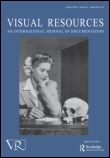
Visual Resources
Scope & Guideline
Transforming Perspectives on Visual Culture
Introduction
Aims and Scopes
- Visual Culture Studies:
The journal focuses on the study of visual culture, analyzing images, media, and their roles in shaping societal narratives and identities. - Interdisciplinary Approaches:
It encourages a blend of methodologies from art history, cultural studies, and media studies, fostering a comprehensive understanding of visual phenomena. - Critical Engagement with Contemporary Issues:
Visual Resources addresses pressing contemporary issues such as environmental activism, digital art, and cultural representation, highlighting the relevance of visual studies in today's world. - Exploration of Emotions and Aesthetics:
The journal investigates how emotions are conveyed through visual media and the aesthetic dimensions of contemporary art, contributing to discussions on human experience and perception. - Focus on Representation and Identity:
It examines themes of representation, including gender, sexuality, and cultural identity, particularly in the context of marginalized communities and narratives.
Trending and Emerging
- Environmental Activism in Visual Culture:
A growing interest in how visual media represents and influences environmental activism, underscoring the role of art and photography in ecological discourse. - Digital Art and New Media:
There is an increasing focus on digital art forms and their implications within society, reflecting the pervasive influence of technology on visual culture. - Exploration of Gender and Identity:
Research examining the intersections of gender, identity, and representation is on the rise, showcasing diverse perspectives and challenging traditional narratives. - Emotional Engagement with Art:
Emerging studies on the emotional dimensions of visual art and media illustrate a shift towards understanding how art impacts human feelings and social consciousness. - Decolonial Perspectives in Visual Arts:
An increasing trend towards decolonial approaches in visual studies, addressing historical injustices and re-examining cultural narratives from marginalized viewpoints.
Declining or Waning
- Traditional Art Historical Methods:
There is a noticeable decline in articles employing conventional art historical methodologies, as the journal increasingly favors interdisciplinary and contemporary approaches. - Static Representations of Art:
Research centered on static interpretations of art, without engaging with dynamic contemporary contexts or digital influences, seems to be diminishing. - Regional Art Focus:
The emphasis on region-specific art histories, particularly outside of major cultural centers, appears to be less prevalent, possibly overshadowed by broader, more global discussions. - Purely Aesthetic Analyses:
Papers focusing solely on aesthetic evaluations without integrating critical cultural perspectives are becoming less common, reflecting a shift towards more contextualized analyses. - Historical Archival Studies:
While archival studies remain important, the focus on historical archives without contemporary relevance is waning, as the journal seeks to connect past and present more dynamically.
Similar Journals
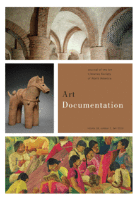
Art Documentation
Bridging Art and Academia for Future GenerationsArt Documentation is a distinguished journal published by the University of Chicago Press, dedicated to advancing the field of art documentation and its related disciplines. With a focus on interdisciplinary studies encompassing Visual Arts, Performing Arts, Archaeology, and Library and Information Sciences, this journal offers a pivotal platform for researchers and professionals aiming to enhance their understanding and practice in these areas. Despite not providing open access options, its contributions are invaluable, showcasing innovative research and discussions that reflect contemporary challenges and methodologies in the art documentation sphere. As evidenced by its Scopus ranking, placing it within the 68th percentile for Visual Arts and Performing Arts and the 49th for Archaeology, the journal demonstrates a commitment to high-quality scholarship. Published annually and spanning converged years from 2015 to 2023, Art Documentation remains vital for academics and practitioners seeking to engage with the latest trends, methodologies, and scholarly discourses enriching the art documentation field.

Iconographica
Decoding Cultural Narratives Through Visual RepresentationIconographica is an esteemed journal published by SISMEL EDIZIONI GALLUZZO, dedicated to the exploration of cultural narratives through visual arts and performing arts. Based in Italy, this journal has been providing a platform for scholarly discourse from 2015 to 2023, and it serves as an important resource for researchers, professionals, and students interested in these interdisciplinary fields. Although indexed in the Q4 quartile for both Cultural Studies and Visual Arts, this journal offers valuable insights that encourage the examination and understanding of visual culture. While currently operating without an open access model, its rigorous peer-review process ensures high-quality academic contributions that reflect the evolving dynamics within these areas of study. Set against the backdrop of a rapidly transforming cultural landscape, Iconographica aims to foster engagement, inspire innovative perspectives, and cultivate a deeper appreciation for the interplay between culture and visual representation.

De Arte
Unveiling Contemporary Cultural NarrativesDe Arte is a distinguished journal dedicated to the field of Cultural Studies, published by Routledge Journals, Taylor & Francis Ltd. Since its inception in 1967, the journal has served as a critical platform for scholarly discourse, exploring the intersection of the arts and cultural dynamics. With an Impact Factor reflecting its quality and relevance in the academic community, De Arte is committed to advancing knowledge through rigorous research. It currently holds a Category Quartile ranking of Q3 in Cultural Studies according to the 2023 metrics, and is indexed in Scopus, ranking #1024 out of 1304 in the Social Sciences subcategory. Although it operates under a traditional publishing model, the journal ensures broad access to its insightful publications. The journal invites researchers, professionals, and students to contribute and engage with contemporary cultural issues, making it an essential resource for those invested in the arts and humanities.
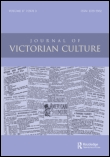
Journal of Victorian Culture
Advancing Interdisciplinary Insights into Victorian LifeThe Journal of Victorian Culture, published by Oxford University Press, is an esteemed academic journal that explores the multifaceted cultural landscape of the Victorian era. With a publication history spanning from 1996 to 2024, this journal serves as a critical platform for scholars and practitioners in the fields of Cultural Studies, History, Literature and Literary Theory, and Visual Arts and Performing Arts. It currently holds notable rankings, including Q3 in Cultural Studies and History, and Q2 in Literature, making it a prominent resource in these disciplines. Targeted at an audience that includes dedicated researchers, professionals, and students, the journal promotes interdisciplinary exploration and innovation, encouraging contributors to engage deeply with Victorian themes and their influence on contemporary culture. For those interested in cutting-edge discussions and insights, the Journal of Victorian Culture provides access to rich, scholarly content that is indispensable for understanding the era's impact on modern artistic and social paradigms.

Visual Studies
Enriching the understanding of visual practices and their impact.Visual Studies, published by Taylor & Francis Ltd, is a leading international journal that serves as a vital platform for interdisciplinary scholarship in the fields of visual arts, cultural studies, and anthropology. Established in 2002 and continuing strong through 2024, it holds impressive rankings including Q1 in Cultural Studies and Visual Arts and Performing Arts, as well as Q2 in Anthropology, reflecting its significant impact and prestige within these disciplines. With a robust Scopus ranking placing it in the 89th percentile for Visual Arts and Performing Arts, this journal does not only publish original research but also fosters rich dialogues on visual culture, representation, and critical theory. Although it is not open access, researchers, practitioners, and students alike can benefit from its rigorous peer-reviewed content, which contributes to advancing knowledge and understanding of visual phenomena. Located in the United Kingdom, Visual Studies continues to shape the conversations surrounding visual practices and their societal implications.
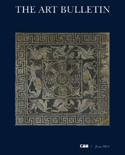
ART BULLETIN
Unveiling the Rich Tapestry of Art HistoryART BULLETIN is a prestigious journal dedicated to the fields of history and visual arts, published by Routledge Journals, Taylor & Francis Ltd. With a rich publication history dating back to 1945, this journal serves as a vital platform for scholarly discourse, presenting cutting-edge research and critical analyses that contribute to our understanding of the arts across various contexts. Despite its Q3 ranking in both the History and Visual Arts categories, the journal has managed to achieve notable stature among its peers, evidenced by its Scopus ranking, placing it in the top 20% for Visual Arts and in the top 25% for History. Scholars and students alike will find valuable insights and innovative perspectives within its pages, making it an essential resource for anyone invested in the academic exploration of art and cultural history. Although currently not open access, the journal is committed to fostering an informed community by disseminating works that encourage scholarly engagement and creative thought.
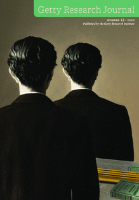
Getty Research Journal
Illuminating Cultural Heritage Through ResearchGetty Research Journal, published by University of Chicago Press, is an influential periodical in the fields of Conservation, History, Museology, and Visual Arts and Performing Arts. Established in the United States, this journal aims to foster scholarly discourse and advance research in the visual arts and cultural heritage, making it a vital resource for researchers, professionals, and students alike. While it holds a Q4 ranking across multiple disciplines in the 2023 category quartiles, indicating opportunities for growth and engagement, its unique focus on the interplay between art, history, and conservation provides a distinct platform for innovative ideas. The journal encompasses a diverse range of topics, encouraging interdisciplinary research that underscores the importance of the arts in society. As it converges years from 2015 to 2024, the Getty Research Journal serves not just as a publication, but as a dynamic forum for critical thought and exploration in the expansive realm of art and culture.

STORIA DELL ARTE
Illuminating Visual Culture Through TimeSTORIA DELL ARTE is a notable journal dedicated to the rich exploration of art history and its varied facets, published by LUCA EDITORI ARTE ROMA. With an ISSN of 0392-4513, this publication serves as a vital resource for researchers, professionals, and students in the fields of Visual Arts and Performing Arts. Although the journal's coverage in Scopus has been discontinued from 2014, it has been recognized in the Scopus ranking as positioned within the 31st percentile among 374 entries in its category, highlighting its relevance in the realm of arts and humanities. While it does not offer open access, the journal's commitment to enriching the discourse on art history makes it an essential read for anyone interested in visual culture and historical contexts. Based in the heart of Rome, at VIA NOVELLA, 22, ROMA 00199 RM, ITALY, STORIA DELL ARTE continues to inspire scholarly discussion and contribute valuable insights to the academic community.
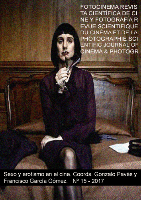
Fotocinema-Revista Cientifica de Cine y Fotografia
Exploring the Intersection of Visual Arts and SocietyFotocinema-Revista Cientifica de Cine y Fotografia is a leading open-access journal published by FOTOCINEMA since 2014, dedicated to the academic exploration of cinema and photography. Based in Spain, this journal serves as a vital platform for researchers, professionals, and students, fostering innovative discourse in the fields of Visual Arts, Performing Arts, and History. With an impressive Q2 rank in both History and Visual Arts, as well as a Q4 rank in Communication in 2023, Fotocinema reflects a commitment to high-quality scholarship, backed by Scopus rankings that highlight its growing influence within the academic community. By offering open access to its content, the journal ensures that significant research is available to a broader audience, encouraging collaboration and knowledge sharing across disciplines. As it continues its converged publication run from 2019 to 2024, Fotocinema stands at the forefront of cinematic and photographic studies, providing an essential resource for those dedicated to understanding the intricate relationships between visual media and society.

Laboratorio de Arte
Elevating the Standards of Arts ScholarshipLaboratorio de Arte is an esteemed journal published by UNIV SEVILLA, EDITORIAL, specializing in the interdisciplinary fields of Arts and Humanities, Conservation, Museology, and Visual Arts. With an impactful presence in research since its inception, the journal has been open access since 2006, promoting the free dissemination of knowledge and fostering academic dialogue among scholars, professionals, and students. The journal adheres to rigorous academic standards, reflected in its categorization within the Q2 and Q3 quartiles across various disciplines, and its commendable rankings in Scopus make it an essential resource for those engaged in the arts. The h-index for this journal showcases its contribution to the field, further solidifying its importance in contemporary research. As it continues to evolve through 2023 and beyond, Laboratorio de Arte serves as a vital platform for innovative thoughts and practices within the vibrant landscape of artistic and cultural studies.